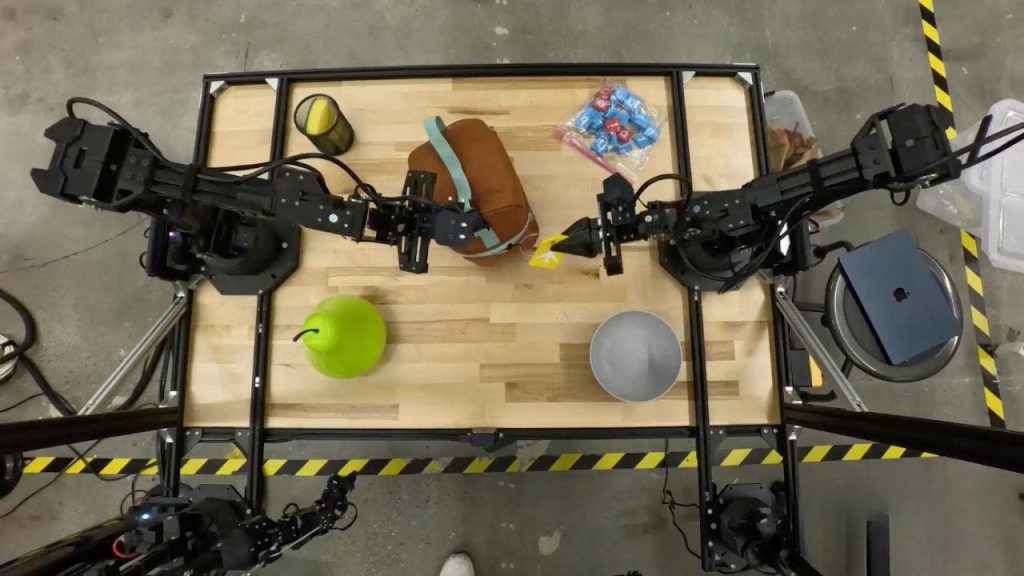Google DeepMind has unveiled a groundbreaking development in robotics with the introduction of Gemini Robotics On-Device, an advanced artificial intelligence system designed to function entirely without a cloud connection. This notable innovation allows robots to execute complex tasks autonomously, making them suitable for environments with unreliable or nonexistent internet access. The system’s capacity for on-device learning empowers it to adapt rapidly to various applications while enhancing privacy and reliability.
| Article Subheadings |
|---|
| 1) Innovative Technology Redefined |
| 2) Adaptability and Customization |
| 3) Enhanced Privacy and Reliability |
| 4) Developer Responsibility in Safety |
| 5) Implications for the Future of Robotics |
Innovative Technology Redefined
The introduction of Gemini Robotics On-Device marks a significant evolution in robotic technology. Unlike traditional robotic systems that rely heavily on constant internet accessibility and cloud computing, this new model operates independently on the device itself. Developed by Google DeepMind, the Gemini system boasts advanced reasoning and control capabilities, which enables robots to understand natural language, perform intricate motor tasks, and generalize knowledge from minimal data points—all without the need for a stable internet connection. Carolina Parada, the head of robotics at Google DeepMind, emphasizes the system’s efficiency and compactness, making it suitable for deployment in environments where internet connectivity is limited or sporadic.
Adaptability and Customization
One of the standout features of Gemini Robotics On-Device is its adaptability. The model requires only 50 to 100 demonstrations to effectively learn various tasks, making it exceptionally user-friendly for developers. Initially trained using Google’s ALOHA robot, it has already been successfully integrated into other platforms, including Apptronik’s Apollo humanoid and the Franka FR3. This flexibility represents a paradigm shift; developers now have the capability to fine-tune a DeepMind robotics model for their specific needs. Google provides access to this innovative technology via its trusted tester program and has released a comprehensive Software Development Kit (SDK), which fosters experimentation and development among designers.
Enhanced Privacy and Reliability
The local operational model of Gemini Robotics On-Device not only enhances functionality but also contributes to improved privacy. Since all data processing occurs directly on the robot, sensitive information remains contained, which is particularly valuable in healthcare and other stringent applications. In scenarios where internet failure is a possibility, this localized approach ensures that robots continue to operate seamlessly without interruptions. Google envisions considerable applications for this technology in remote, security-sensitive settings, providing users with reliable and responsive robotic systems that can address challenges in places where traditional robots may falter.
Developer Responsibility in Safety
While the on-device model offers remarkable capabilities, Google acknowledges the importance of safety and operator responsibility. This version does not come equipped with built-in semantic safety features, making it imperative for developers to integrate their own safety systems when deploying robots. Tools such as the Gemini Live API and lower-level controllers have been provided to facilitate this aspect. To prioritize safety and further understanding of real-world applications, Google is limiting access to a select group of developers, allowing for a more focused exploration of possible safety risks and required protocols.
Implications for the Future of Robotics
The introduction of Gemini Robotics On-Device is poised to reshape the future of robotics, particularly as robots become increasingly integral to everyday tasks. By eliminating the dependency on cloud connectivity, this technology unleashes potential applications in various fields, from industrial automation to home assistance—and beyond. The system’s rapid responsiveness and reliability present a clear advantage in practical settings, making it an appealing choice for developers and users alike. With these advancements, the industry is moving closer to enabling the seamless integration of robotics into everyday life.
| No. | Key Points |
|---|---|
| 1 | Gemini Robotics On-Device operates independently without the need for internet connectivity. |
| 2 | The AI can generalize knowledge from minimal demonstrations, making it adaptable to various tasks. |
| 3 | Transactions involving sensitive data can be processed locally, enhancing user privacy. |
| 4 | Developers must implement their own safety systems, as the model lacks built-in safety features. |
| 5 | The technology is set to open new opportunities in various practical applications across sectors. |
Summary
The launch of Gemini Robotics On-Device by Google DeepMind represents a crucial advancement in robotic technology, eliminating reliance on cloud computing and enhancing privacy and adaptability. Its potential applications span numerous fields, indicating that on-device AI could play a significant role in the future of robotics and automation. As we move toward a more interconnected world, innovations like Gemini Robotics On-Device set the stage for smarter and more efficient automation solutions.
Frequently Asked Questions
Question: What makes Gemini Robotics On-Device different from other robotic systems?
Gemini Robotics On-Device operates independently without relying on the cloud, allowing it to function in areas with poor internet connectivity while maintaining its sophisticated capabilities.
Question: How can developers adapt Gemini Robotics On-Device to different platforms?
Developers can customize the system using as few as 50 to 100 demonstrations, allowing for rapid adaptability across various robotic platforms.
Question: Why is the local operation of Gemini Robotics On-Device significant?
Local operation ensures that all data processing occurs on the robot itself, enhancing privacy and reliability, especially in sensitive applications like healthcare.


